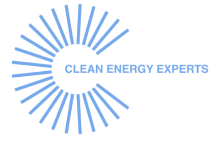Leads for Solar Business: How to Acquire Them and Convert Them to Solar Sales

The solar industry runs on solar leads. Solar companies cannot thrive without them, especially in today’s competitive market. While it is easy to say leads are key to a successful solar installation business, acquiring them—especially high-quality ones—is easier said than done.
A lot of time and effort goes into driving more solar leads to a business. This is one of the main reasons solar companies often tap into third-party affiliates that will collect high-quality solar leads for them. This way, solar companies will be able to focus on their business operations and product development.
However, there are various ways to generate high-quality leads for your solar installation company. From inbound marketing to referrals to solar lead lists, explore effective methods to drive more solar leads and successfully turn them into solar sales.
Proven Ways to Get Solar Business Leads
Trusted Affiliate Websites
Third-party websites, like Clean Energy Experts, have expert knowledge of solar businesses and their prospects. Plus, they dominate the search engine results with the most relevant solar keywords.
Try Googling phrases like “solar companies near me” or “solar energy installation,” and third-party solar websites will probably be on the first page of results. Because of the online traffic they acquire, they can collect more leads than even solar installers themselves.
Many solar companies like to partner with these solar services as they offer a passive means of lead generation. All they need to do is wait for these websites to send them new leads. In turn, they get a commission for every sale.
How it works: Potential customers contact these third-party websites, which will then provide them with useful information about solar energy, its benefits, its installation, and connect them with several solar companies within their locale.
Pros: This is considered one of the best ways of generating solar leads because of these websites’ excellent visibility on search engines. The more traffic they get, the more leads they can collect.
Cons: This may not be as effective for locales with an oversaturated solar market. Third-party websites will also share leads with competitor solar companies, which can reduce the number of leads acquired by a single installer.
Inbound Marketing
Inbound marketing is one of the best ways to drive more leads and sales across industries. This type of marketing involves a series of methods that prove one’s expertise in their specific industry. The goal is to have a visible online presence that will provide value to potential customers.
This method works particularly well in the solar business, as the target audience is curious homeowners looking to explore renewable energy. To learn more, they will scour the internet for helpful resources before making a purchase. With inbound marketing methods, solar companies are able to educate their audience and stay top-of-mind the moment they decide to get a solar quote.
How it works: To kick-start an online presence, solar installers can launch their own website and religiously update it with relevant information, blogs, and other resources. A social media presence also helps reach a wider audience, as does tapping into paid ads on both social platforms and on Google.
Pros: Inbound marketing is one of the least expensive methods for lead generation. Unlike other strategies, it attracts exclusive solar leads that are acquired through a solar company’s sheer expertise and professionalism.
Cons: Results don’t happen overnight, so this may not be the best method for solar installers looking to pick up traction in the shortest amount of time.
Referrals
Referrals are the best form of solar leads, as they are most likely pre-qualified. Nothing beats word-of-mouth referrals from existing customers who have become advocates of a brand. Plus, it doesn’t cost a single penny!
The challenge for businesses is how to strategically get these referrals. Once an effective system is in place, it will be easy to get that ball of solar leads going.
How it works: Also known as word-of-mouth marketing, referrals are made by existing customers who have recommended a solar company to their family and friends.
Pros: People often trust recommendations from family and acquaintances. This is why a lot of solar leads that come from referrals often close with a successful sale. These solar leads are likely already interested in getting the service and will only need further information to finally give the green light.
Cons: Startup solar companies can’t expect an influx of referrals anytime soon. Like inbound marketing, this method requires time and dedication.
Solar Lead Lists
Buying solar lead lists is one of the most common ways a solar company can get leads in the quickest way possible. Lead providers may provide an actual list or a B2B lead database to solar installers that don’t have the time and manpower to do the grunt work.
How it works: Solar installers buy a list of solar leads from lead providers so they can get started pitching their service right away.
Pros: Buying lead lists is great for those looking to generate income right away.
Cons: While they get quite a number of leads in one go, businesses may not get quality leads. And if they do get a good lead, a competitor may have already beaten them to a sale by the time they get on the phone.
Property Data Platforms
Unlike the previous passive methods of lead generation, solar companies can also choose to scour for quality solar leads themselves. With data platforms like PropertyRadar and Google’s Project Sunroof, solar installers can actively search for potential clients based on their public data.
How it works: With the help of property data platforms, solar professionals can create and contact their own unique leads list in any location of their choice. They only need to sift through the data according to income, roof type, equity level, and any other available filter.
Benefits: Solar installers can now look for and evaluate solar leads themselves. Plus, these platforms have robust features that allow them to pre-qualify their leads.
Cons: These property data platforms often require subscription-based payments. They may also have a steep learning curve, especially for non-tech-savvy people.
Effective Tips to Turn Solar Leads into Solar Sales
After acquiring leads, the next step is closing those sales. This is a slightly different ballgame than lead generation, but with the right advice, solar businesses will be raking in revenue in no time.
Follow Up
Give a one- to two-minute call to each lead to qualify their interest. When prioritizing their leads, this helps solar professionals to separate those that are ready to commit to their sales team from those that still need to be nurtured with more marketing materials.
Get Customer Referrals
Once a sale is closed, it is important to ask a client for a review, which they can post on a solar company’s social media page or website. Social proof is a powerful tool to gain more referrals. Once a great customer rapport is established, it might also be possible to spread the word about their experience with their family and friends. This often gets a business more high-quality leads than any other type of lead generation.
Display Credentials and Accreditations
Consumers are now smarter than ever, so it is essential to ease their worries about being scammed. This especially applies to new solar companies that have not bulked up their client portfolio yet. Solar companies need to be transparent about their expertise to gain the trust and confidence of customers.
Publish Case Studies
Case studies are an effective means of enticing leads to make a sale. More than marketing materials, they will want to learn about real-life scenarios, such as how a particular client has benefited from a solar system installation.
Explain the Installation Process
Leads will want to know how the project will be executed once they take on the sale. A few pertinent pieces of information to include may be the amount of time the project will take, the team that will perform the installation (whether in-house or through a subcontractor), and an overview of how it is done.
Employ an Accessible Customer Support Team
Avoid wasting leads by ensuring someone is always there to pick up the phone. If the staff quoting and installing is away or catering to another client, other office staff should be trained and knowledgeable to answer any queries from a high-potential lead.
Conclusion
As with any business, solar leads don’t just fall from the sky. Oftentimes, solar businesses will have to do the legwork to acquire high-quality leads themselves. Other times, they will need to work smartly and employ passive methods to generate them. To boost their efforts, a mix of these strategies often works best. The best thing to do is to first test the waters, find out what works best for the business, and apply it to their future solar strategies.

